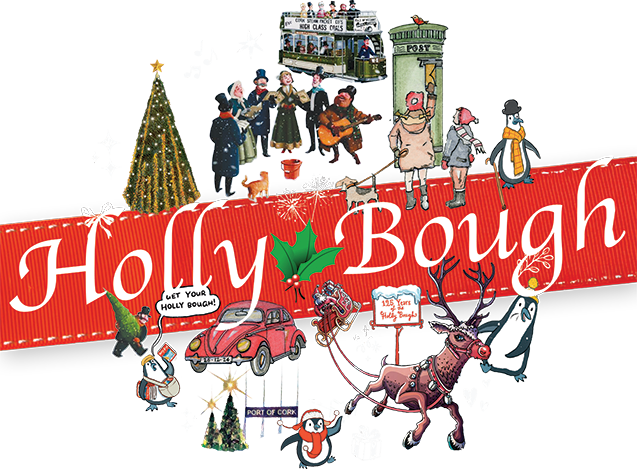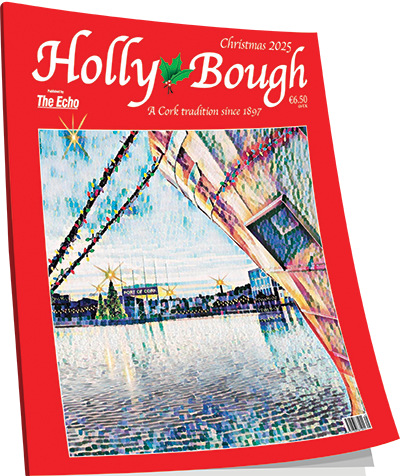Cork textile artist continues to create beautiful works of art following brain haemorrhage
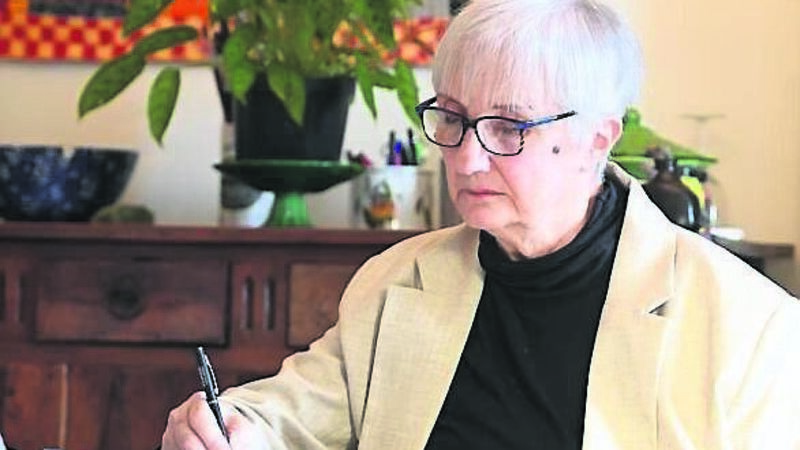
Textile artist Evelyn Montague at home in Cork. Pictures; Larry Cummins
EVELYN Montague doesn’t seem to do self-pity, having chosen instead ‘a new beginning’ when a brain haemorrhage resulted in partial paralysis in 1995.
This Cork-based French textile artist, who makes fabric collage, having started her practice making patchwork quilts, is showing her wares at the Lavit Gallery in Cork, along with other textile artists as part of the gallery’s 60th year anniversary programme.
Evelyn, whose ex-husband was the late poet John Montague, moved to Cork with him in 1972, having attended the Sorbonne in Paris, where her doctoral studies were in Anglo-American literature.
Evelyn, who has studied art therapy and applied “healing art techniques to my own case”, is unable to construct the wall textiles she used to make. Nor can she drive any more or do penmanship, which she loved.
But this resourceful mother-of-two and grandmother saw an opportunity “to imagine the mindset of our ancestors when they wrote their first marks”. (She now makes pieces that are put together by an industrial machinist. Friends, including Joanna Harrington, help her with her handiwork.)
Having closely studied runic text and Mesopotamian and African text, Evelyn noticed that, despite the marks from these traditions being extremely pared down, the markers had total freedom. She felt that if she made the marks her own, a new penmanship would evolve which would represent her deepest self.
She was excited when she transformed primitive strokes onto a prepared surface of white linen. This she distressed “to be reminded of Egyptian funeral wrappings.”
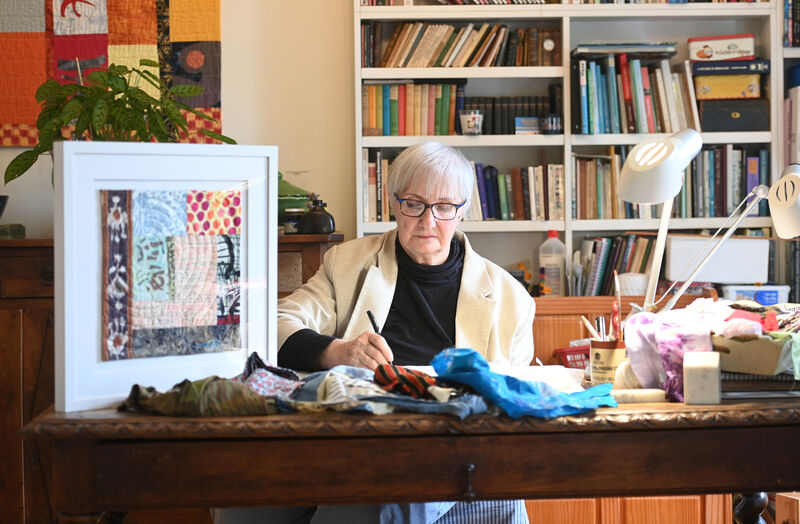
Her art is impressive, seemingly abstract, portraying Ogham-like marks as well as arrangements of other marks and conventional figures and letters.
In her stylish Cork city apartment, with a big solid wooden table in the living room and a couch and chairs that have soft pink and oatmeal coloured patchwork throws draped over them, Evelyn says her living space has nothing to do with money. Rather, it’s put together with treasured items such as numerous books on bookshelves and art on the walls, including cameo brooch-like carvings of women’s heads surrounding part of the fireplace. The room manages to be both homely and artistic.
Evelyn, who has had four one-woman shows, says her talent comes from her mother and her female ancestors.
There was always a quiet space beside my mother when I came home from school. She sewed things in the same place every day.
"Her generation would have had good quality linen sheets which they mended as well as everything else. There was an ocean of peace around her. If you sat next to her and stayed quiet, she was happy to show me how to sew. One time, I got very severe hepatitis. It was quite serious. My mother looked after me. I couldn’t do anything apart from sewing. I found that I liked it.”
When Evelyn came to Ireland in the early 1970s, places like the Kilkenny Design Centre were thriving.
“It was clear a new aesthetic in craft was starting. The most interesting people I met in Cork were the artists and people making ware and the traders in the English Market. I lived in Grattan Hill at the time. A neighbour, journalist Isabel Healy, showed me how to surround pieces of cardboard with fabric and then sew them together. That was a big gift she gave me. It was the original English method of making patchwork.”
Being away from friends and family, Evelyn initially found Cork lonely.
“I suddenly became invisible. I had worked in France as an office administrator in the American Embassy. I also taught English.”
At weekends, Evelyn and John would go to see composer Séan Ó Riada’s family and people from Gael Linn coming down to Cúil Aodha from Dublin.
“There were concerts given by the budding Chieftains. People would gather after the music in the cavernous Mills pub where everybody spoke Irish. I wasn’t spoken to very much but the language was the reason for that. I decided to bring down my cardboard bits as well as fabric which I cut in advance and put in a bag. I’d sit in the corner of the bar and sew away. Suddenly, I belonged. I was the crazy woman sewing in the corner. I was one of them, but unfortunately, I didn’t learn Irish.”
Evelyn remembers how her first solo show at the Triskel Arts Centre came about.
She had experienced “the kind of digs young couples had to live in because they haven’t yet been able to buy a house, I thought they were horrific places. Missing the cultural life and the sun in Paris, I made a patchwork quilt with a lot of yellow in it. Put over your bed, you could call it home.
“Then, in Grattan Hill, one of the visitors to the house was Robbie McDonald of the Triskel. He saw the yellow quilt and a few other pieces and said he wanted to give me a show. I never looked back after that.” The exhibition was in 1983.
The Montagues’ travels took them to America, where Evelyn attended workshops with the greats such as Michael James and Nancy Crow.
“They command prices like what (painter) Tony O’Malley would get. When they taught us, they didn’t talk down to us.
“As I was a teacher, I decided to teach what I was learning to others. It was too good to keep to yourself.”
Evelyn was “flooded with requests” when she put a notice in the then Cork Examiner offering classes. She read up on ‘quilting bees’ whereby women get together for chats and to make a patchwork quilt.
“I still belong to ‘The Four Winds’, a quilting bee that myself and a group of women have been in for over 40 years. There have been the deaths of people close to us, cancer and other awful things that we have weathered. The quilting bee offers solidarity and love.
Patchwork is conducive to love. It wasn’t considered an art form years ago.
At the local quilting bees, Evelyn says that shy women from small towns around Munster “who, from my point of view didn’t have much of a life, started flowering. It wasn’t just the meetings. They were visibly doing something they loved. If there is something I’ll be proud of at the end of my life, it is having those meetings, seeing the women arriving in the one car, becoming friends.”
Evelyn’s family, from a Huguenot background, originally came from rural France. The men would farm while the women took in washing, gradually bettering themselves and moving to towns and eventually cities.
She says that one of her ancestors was the couturier Jeanne Lanvin (1867-1946). She had more impact than Coco Chanel, claims Evelyn.
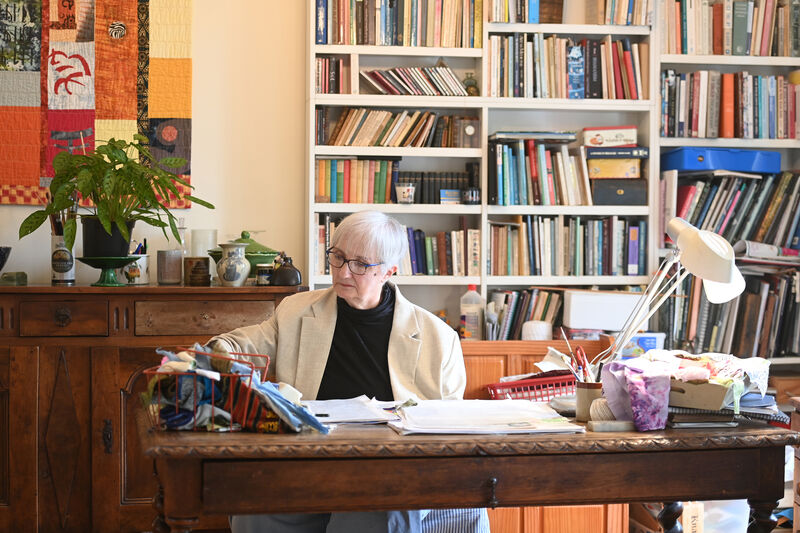
“She was very down to earth. She got women out of corsets and out of their frills. I love that. When I see somebody in frills, I feel the woman is being infantilised.
“Where clothes are concerned, Jeanne Lanvin believed what mattered was what you were comfortable in and then to streamline it. Less is more.”
At the Lavit Gallery, Evelyn is showing abstract shapes of mixed fabrics fused on painted linen and then machine quilted. She calls this “an emotional landscape” and says it is her way of exploring what is left since she became disabled. Resilient and creative, Evelyn is not the kind of woman to bow down, even in the face of adversity.
About the exhibition
‘Into the Weave’ is at the Lavit Gallery until August 26. Represented are artists and makers for whom textiles are the sole material, artists for whom the medium is a new departure or a diversification, and those for whom fabrics are a recurring theme or subject.
As well as being a functional and widely used material in our everyday lives, textiles as an artform are currently enjoying a renaissance of sorts, having been incorporated into contemporary art practice as ‘textile art’ or ‘fibre art’.
Exhibiting artists include Laura Angell, George Bolster, Ceadogán Rugs (designs by Deirdre Breen and Shane O’Driscoll), Myra Jago, Allyson Keehan, Richard Malone, Evelyn Montague, Ailbhe Ní Bhriain, Helen O’Shea, Caroline Schofield, Margo Selby, Matt Smith, Jennifer Trouton and Leiko Uchiyama.
This exhibition forms part of Lavit Gallery’s 60 year anniversary programme, see www.lavitgallery.com for more.
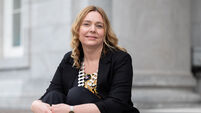
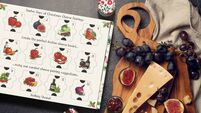

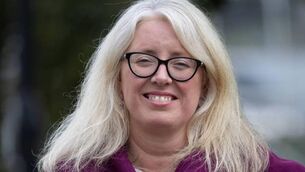
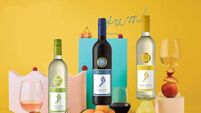
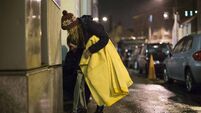

 App?
App?

